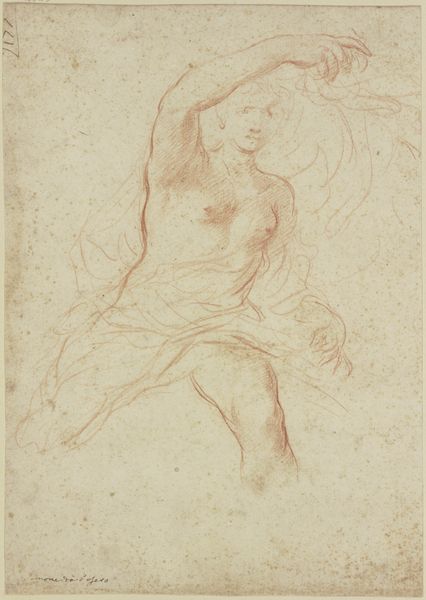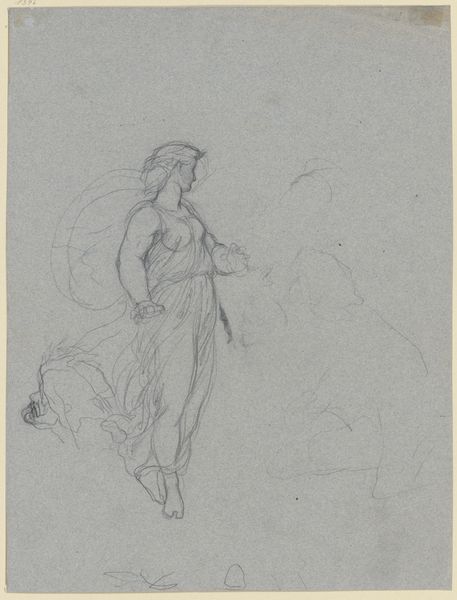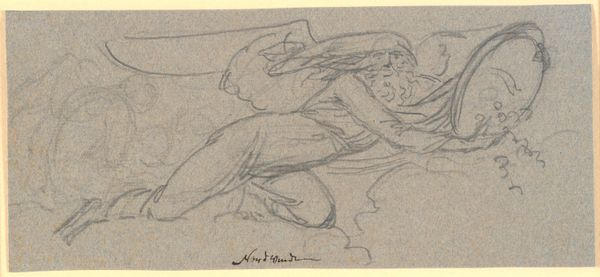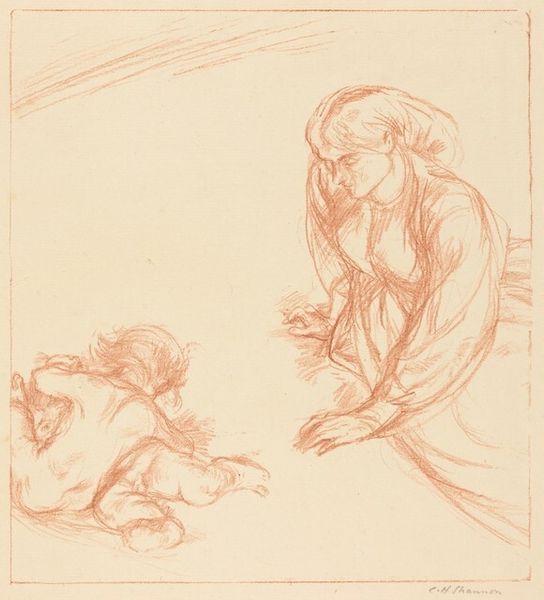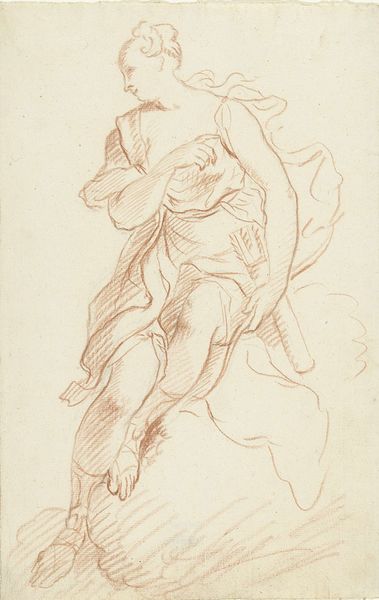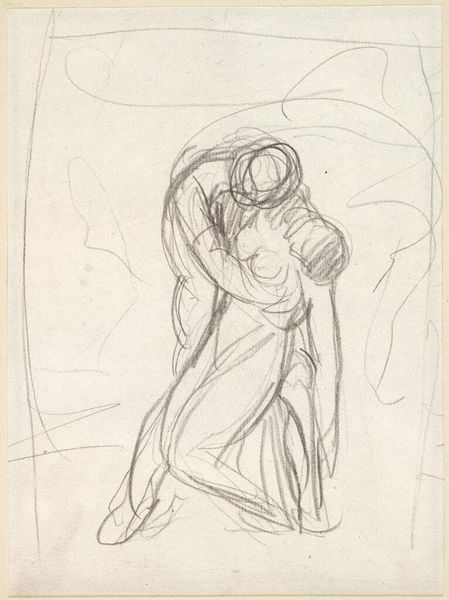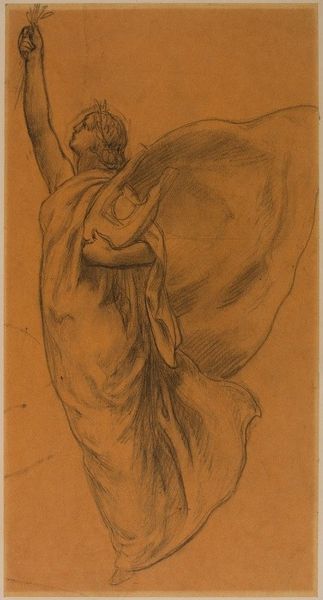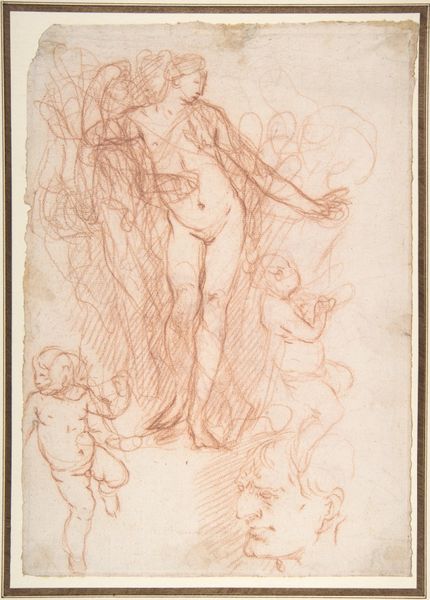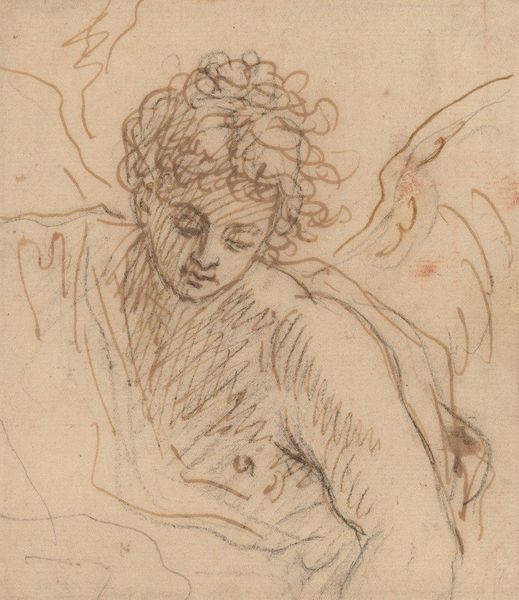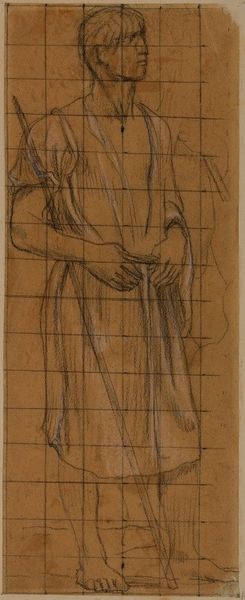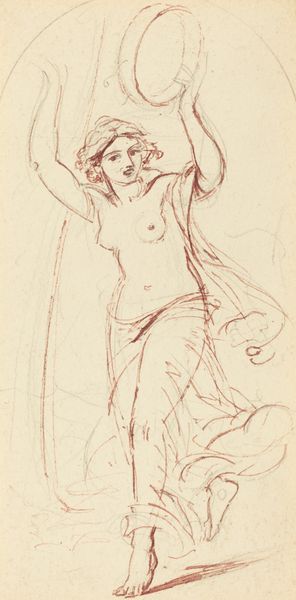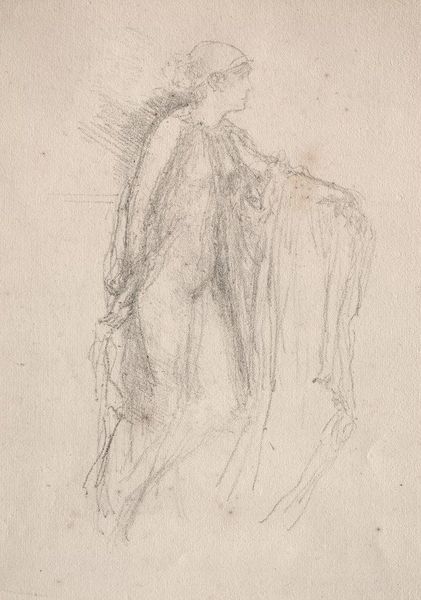
drawing
#
drawing
#
amateur sketch
#
light pencil work
#
pencil sketch
#
incomplete sketchy
#
personal sketchbook
#
detailed observational sketch
#
sketchbook drawing
#
sketchbook art
#
fantasy sketch
#
initial sketch
Copyright: Public Domain: Artvee
Editor: We're looking at "Death of Lucretia," a drawing by Guercino from around 1640. It's done in a reddish chalk, and there's something so raw about the lines, so immediate. What strikes you most about this piece? Curator: What strikes me is precisely that immediacy you mentioned. Forget the tragic narrative for a moment. Consider the economics of chalk, of paper. Guercino, in choosing these accessible, reproducible materials, democratizes the very idea of history painting. It moves away from the exclusive patronage systems and the preciousness associated with oil on canvas. This drawing is about the process of sketching, thinking, and, most importantly, making art accessible. Editor: So, you're seeing the choice of material as a deliberate social statement? Curator: Absolutely. Look at the frantic lines. This isn't a finished, polished piece meant for a wealthy collector. It’s a working drawing, likely for his studio. It reveals the labor, the effort, the physical act of creation. Think of the apprentice artists who would have learned from it, copying these very lines! The *making* of art, its very means of production, becomes the subject. The story of Lucretia almost becomes secondary to the story of art production itself. Editor: I hadn't considered the instructional aspect, or that chalk made it easier to share and copy, I was focusing on the drama! Curator: The drama is a consequence of this direct engagement with materials. Consider too, how a drawing like this might circulate, the accessibility of reproduction further enabling dissemination of visual and even political ideas. It's not just art for art's sake; it’s about how art *functions* within a broader societal structure. What do you make of it now, after considering the social context? Editor: I guess seeing it as a product of artistic labor and potential tool, rather than solely as an artwork about a tragic figure, gives it more depth. Curator: Exactly! We're no longer simply consuming an image. We are acknowledging and investigating its production and circulation.
Comments
No comments
Be the first to comment and join the conversation on the ultimate creative platform.

